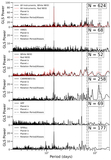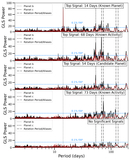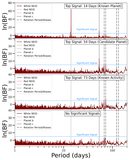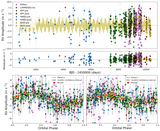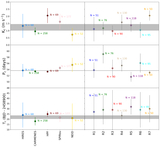Image Details
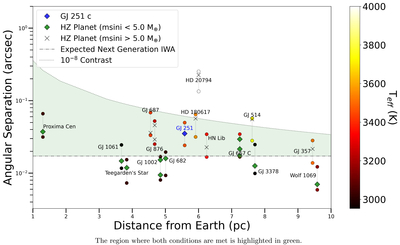
Caption: Figure 14.
Angular separation of the HZ for the closest stars to Earth that have known HZ planets. The conservative inner and outer edges of the system’s HZ are plotted and connected by a gray line. Points are color-coded by stellar effective temperature. Planets that might be terrestrial are highlighted with green diamonds, while gas-dominant planets are marked with an x. We separate these populations at a minimum mass of 5 M⊕ because planets with greater mass become increasingly unlikely to remain terrestrial. We further include a plausible end-goal IWA for next generation 30 meter class telescopes and a curve showing the angle at which a 2 R⊕ planet would be visible at 10−8 contrast with an albedo of 0.5. This curve actually corresponds to a particular physical separation, which correspondingly translates into smaller angular separations for systems further from Earth. The region where both conditions are met is highlighted in green.
Copyright and Terms & Conditions
© 2025. The Author(s). Published by the American Astronomical Society.



